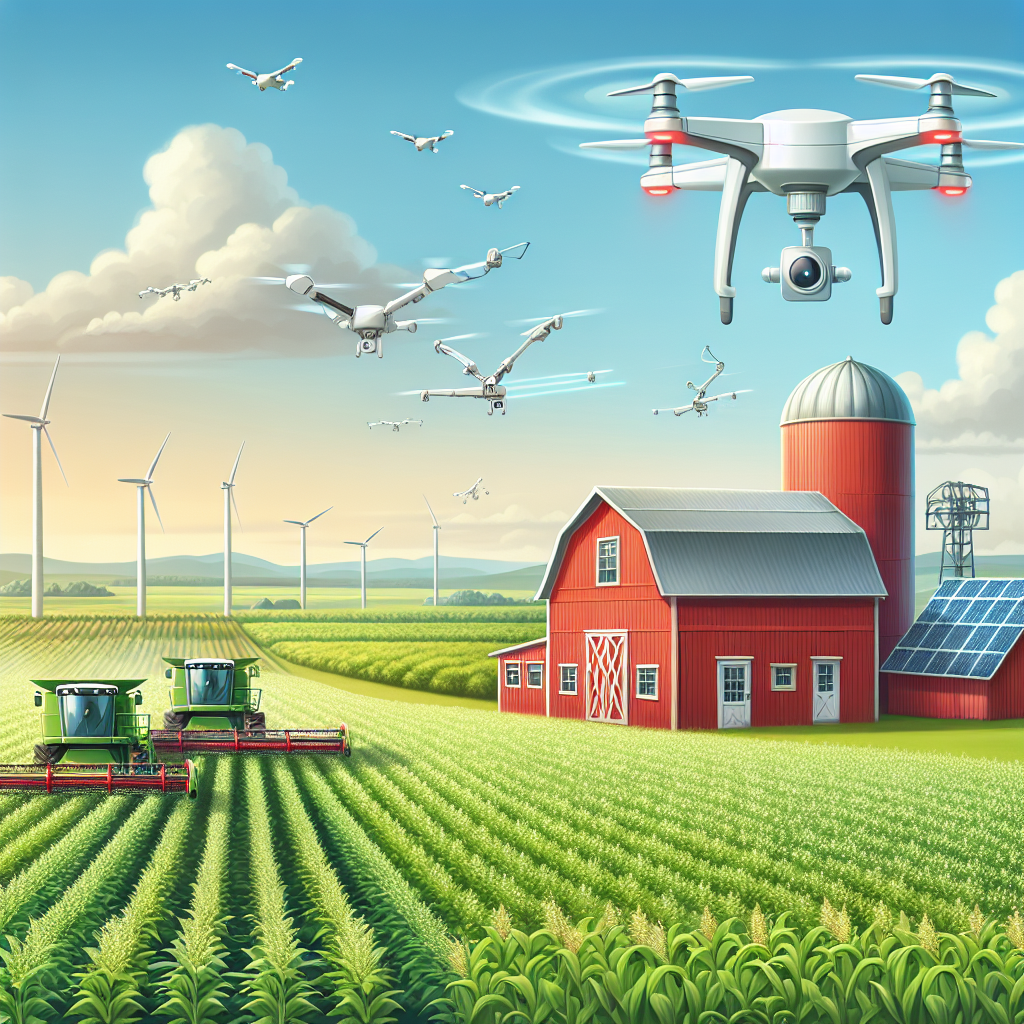AI-driven smart farming techniques have revolutionized the agricultural industry by using cutting-edge technology to improve efficiency, increase productivity, and reduce environmental impact. These advanced techniques leverage artificial intelligence (AI) to analyze data, make predictions, and automate tasks, ultimately leading to more sustainable and profitable farming practices.
One of the key benefits of AI-driven smart farming techniques is the ability to collect and analyze vast amounts of data from various sources, such as sensors, drones, satellites, and weather forecasts. This data can provide valuable insights into crop health, soil quality, weather patterns, and more, allowing farmers to make informed decisions in real-time. By using AI algorithms to process this data, farmers can optimize irrigation schedules, predict pest outbreaks, and even monitor livestock health, leading to higher yields and lower production costs.
Another important aspect of AI-driven smart farming techniques is the use of robotics and automation to perform tasks that would be time-consuming or labor-intensive for humans. For example, autonomous tractors can plant and harvest crops with precision, while drones can monitor fields for signs of disease or pests. These technologies not only save time and labor but also reduce the need for chemicals and pesticides, resulting in more sustainable farming practices.
In addition, AI-driven smart farming techniques can also help farmers manage resources more efficiently. For example, precision agriculture uses AI algorithms to create detailed maps of fields, allowing farmers to apply fertilizers and pesticides only where they are needed. This reduces waste and environmental impact while maximizing crop yields. Similarly, AI-powered irrigation systems can adjust water usage based on real-time data, ensuring that crops receive the optimal amount of water without over-irrigating.
Overall, AI-driven smart farming techniques have the potential to transform the agricultural industry by improving efficiency, sustainability, and profitability. By harnessing the power of artificial intelligence, farmers can make better decisions, optimize resources, and ultimately produce more food with less impact on the environment.
Frequently Asked Questions (FAQs):
Q: What is AI-driven smart farming?
A: AI-driven smart farming refers to the use of artificial intelligence technologies to improve efficiency, productivity, and sustainability in agriculture. By analyzing data, making predictions, and automating tasks, AI can help farmers make better decisions and optimize resources.
Q: How does AI help in smart farming?
A: AI helps in smart farming by analyzing data from various sources, such as sensors, drones, and satellites, to provide insights into crop health, soil quality, weather patterns, and more. AI algorithms can then be used to make predictions, automate tasks, and optimize resources, leading to higher yields and lower production costs.
Q: What are some examples of AI-driven smart farming techniques?
A: Some examples of AI-driven smart farming techniques include precision agriculture, which uses AI algorithms to create detailed maps of fields for optimized resource management, autonomous tractors for planting and harvesting crops, drones for monitoring fields, and AI-powered irrigation systems for efficient water usage.
Q: What are the benefits of AI-driven smart farming?
A: The benefits of AI-driven smart farming include increased efficiency, higher productivity, reduced environmental impact, and lower production costs. By leveraging artificial intelligence technologies, farmers can make better decisions, optimize resources, and ultimately produce more food with less impact on the environment.
Q: Is AI-driven smart farming sustainable?
A: Yes, AI-driven smart farming is sustainable because it enables farmers to optimize resources, reduce waste, and minimize environmental impact. By using AI algorithms to analyze data and automate tasks, farmers can practice more sustainable farming practices while still increasing productivity and profitability.

